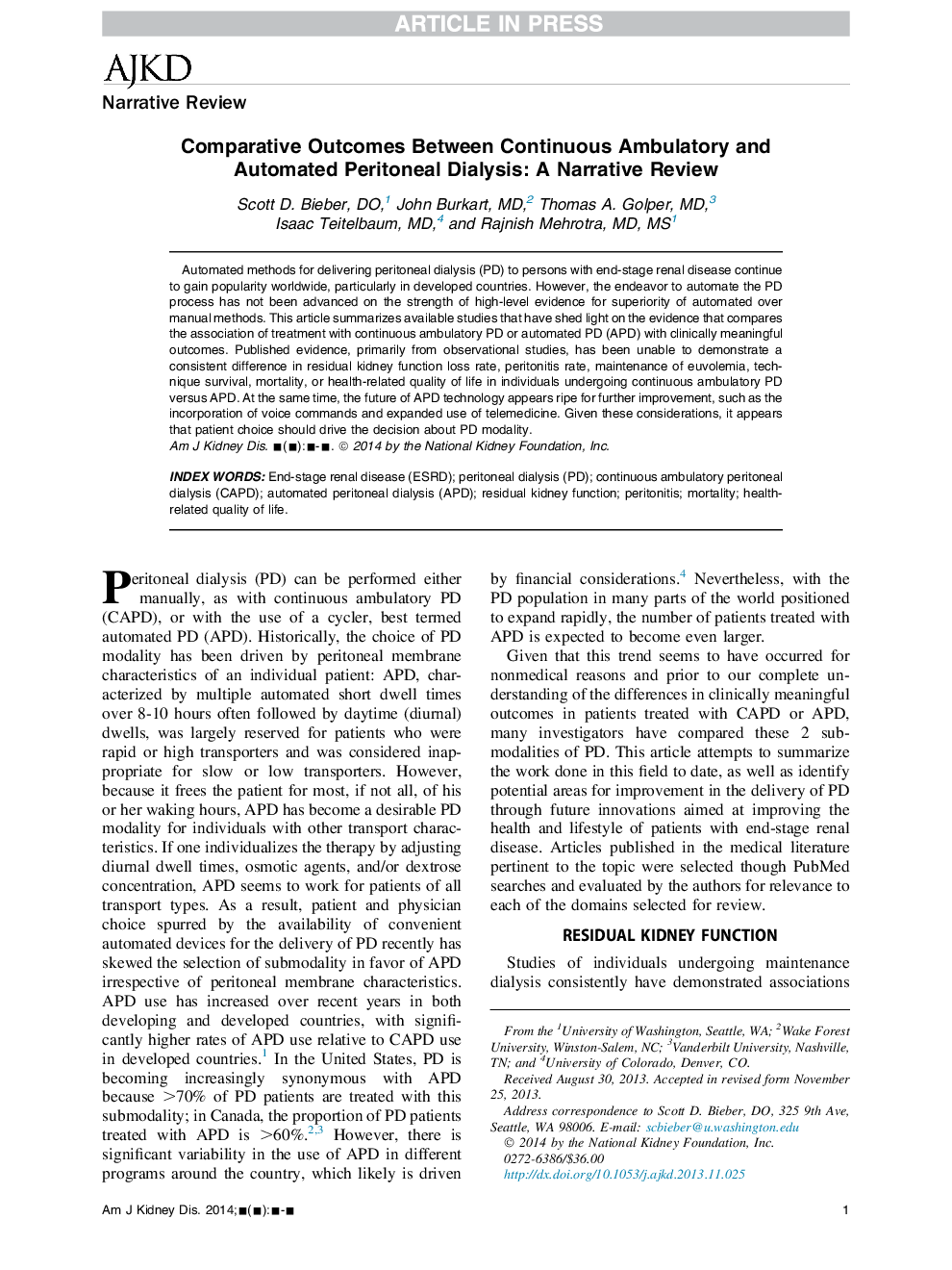| Article ID | Journal | Published Year | Pages | File Type |
|---|---|---|---|---|
| 3847822 | American Journal of Kidney Diseases | 2014 | 11 Pages |
Abstract
Automated methods for delivering peritoneal dialysis (PD) to persons with end-stage renal disease continue to gain popularity worldwide, particularly in developed countries. However, the endeavor to automate the PD process has not been advanced on the strength of high-level evidence for superiority of automated over manual methods. This article summarizes available studies that have shed light on the evidence that compares the association of treatment with continuous ambulatory PD or automated PD (APD) with clinically meaningful outcomes. Published evidence, primarily from observational studies, has been unable to demonstrate a consistent difference in residual kidney function loss rate, peritonitis rate, maintenance of euvolemia, technique survival, mortality, or health-related quality of life in individuals undergoing continuous ambulatory PD versus APD. At the same time, the future of APD technology appears ripe for further improvement, such as the incorporation of voice commands and expanded use of telemedicine. Given these considerations, it appears that patient choice should drive the decision about PD modality.
Keywords
Related Topics
Health Sciences
Medicine and Dentistry
Nephrology
Authors
Scott D. DO, John MD, Thomas A. MD, Isaac MD, Rajnish MD, MS,
